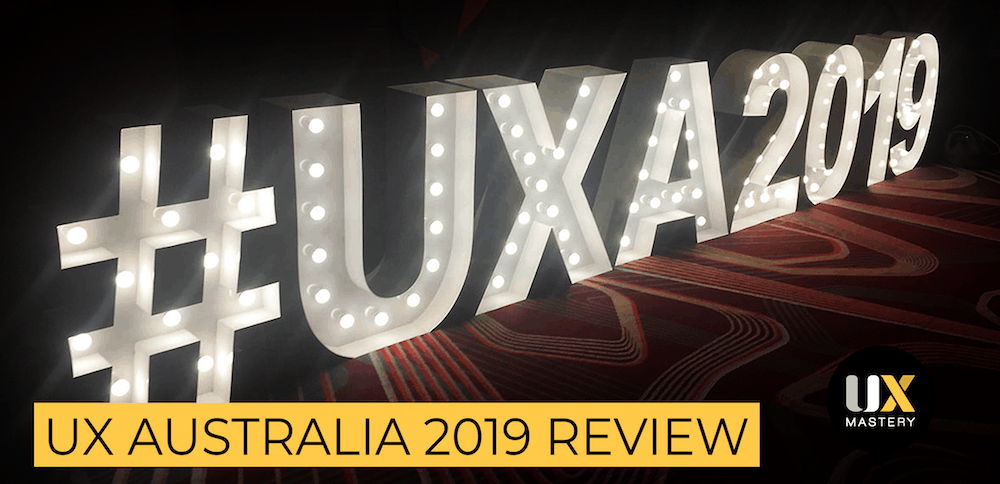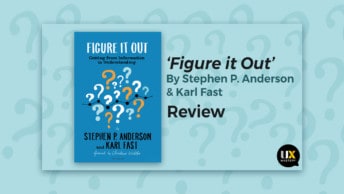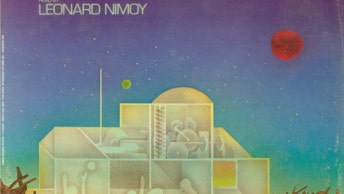If you were sitting comfortably at UX Australia 2019, then you were not paying attention. Steve and his team deserve great credit for being brave with the themes explored.
The 2019 lineup of speakers was a bold program of diverse individuals, and challenging views. None of us can return to designing and building products and say we are unaware of design’s wider impact and our own responsibilities. What was great about many of the presentations, was that they were also solution-focused. The scary reality of how things are was balanced with solid ideas of collective action we, as designers, can take to change things.
The overriding feeling I had at the end of UX Australia, was that this is a great time to be a UX professional, but we have a duty to rock the boat, to ensure that we are designing ethically sound solutions.
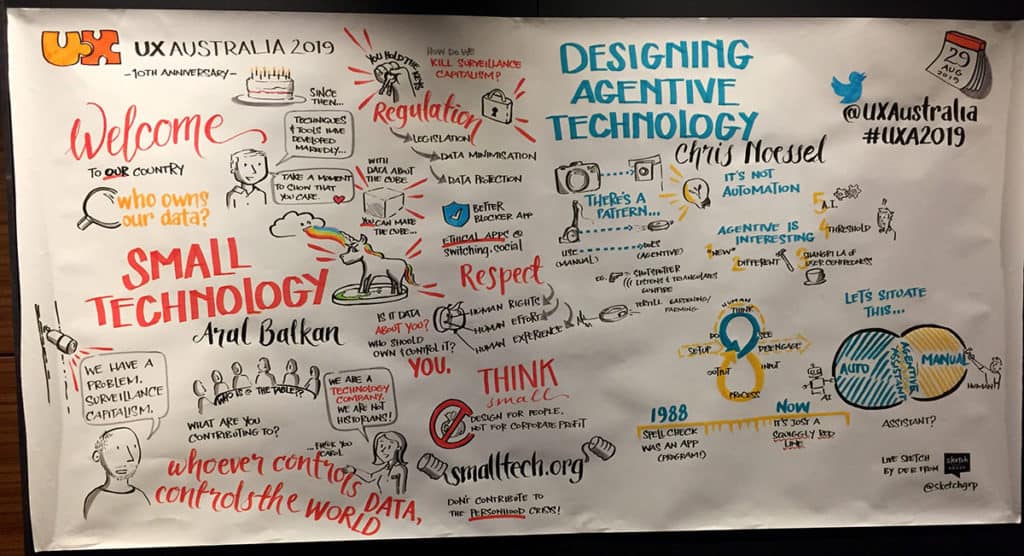
Quick links to presentation reviews in this article:
Keynotes:
- Aral Balkan: Small Technology
- Liz Jackson: Engaging in Disability as a Creative Practice
- Kate O’Neill: The Design of Meaning for the future of Humanity
- Joe Macleod: Ends. A Critical Difference
Long Talks:
- Chris Noessel: Designing Agentive Technology
- Andy Polaine: Design in the Age of Synthetic Realities
- Trip O’Dell: Synthetic Intimacy
- Phillip Hunter: Strategies for Conversational Product Experiences
- Tea Uglow: Designing Around the Brain
Short Talks Highlights:
- Elle Geraghty: Bust the Seven BIG Digital Content Problems
- Pilar Esteban: Relearning to Communicate
- Tim Karioti: Laws to Norms – How Privacy Can Influence Design
- Zoe Green & Sam Frain: Respectful Curiosity – How and With Whom are You Building Inclusion?
- David Di Sipio: How to Beat the Failure Cycle in Ten Minutes
Keynotes
Aral Balkan
Small Technology
If the coffee didn’t wake everyone up on Thursday morning then Aral Balkan sure did. Aral didn’t hold back and gave us a reality check of the world around us, and the impact of surveillance and capitalism on our privacy. He pulled back the curtain on companies such as Facebook and IBM, showing us their past deeds and current business models. Aral painted a vivid picture of how money funds design and development in very specific directions, and which are not always aligned with the greater good.
What I liked about Aral’s presentation was he offered solutions and alternatives. It can be tempting to just bash the big tech players, but it’s always easier to win an argument if you have a credible alternative.
Liz Jackson
Engaging in Disability as a Creative Practice
Jackson is a force of will. An in-your-face, no-excuses advocate of better design for ‘all’. She asked us why are we designing for disabled people, but not designing with disabled people. Including the end-user could be the mantra for UX design, but how many of us have worked on a project for a specific user group and never met such a person?
This was a talk I’d marked under ‘not to be missed’ and it didn’t disappoint. Liz Jackson left us all with a little bit of guilt for our past design mistakes, and a lot of inspiration to do better from now on.
Kate O’Neill
The Design of Meaning for the Future of Humanity
If you want to learn more about the future of AI and humans, then the work of Kate O’Neill seems like a great place to start. One of the themes constant in this presentation was the idea that what separates us from machines is ‘humans crave meaning’. The bots don’t care why they do something, but people do. We have to define meaning before we scale the technology.
Designed automation can be a great thing, but we need to guard against losing something important in doing so.
Joe Macleod
Ends. A Critical Difference.
As ending keynotes go, this was a classic. Joe’s talk was a rush of information at a lightning pace. His research into the value of ending relationships with customers is so obvious once you see it. Yet it is such a missed opportunity for many organisations. A proper ending of consumer technology relationships has so many benefits for everyone, and it will become an opportunity of differentiation for those companies that see it first.
There are massive UX considerations and opportunities here, and reading Joe’s book, ‘Ends’ is probably the best starting point.
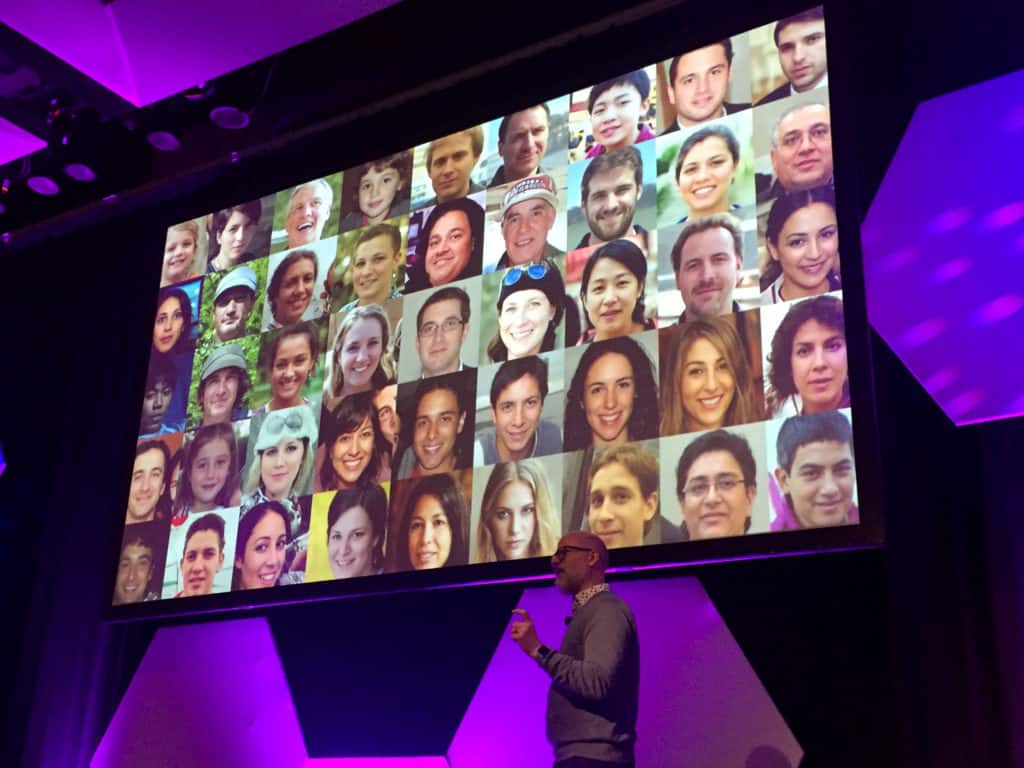
Long talks highlights
Chris Noessel
Designing Agentive Technology
Chris introduced us to the world of agentive technology, how AI can act as an agent on our behalf. The first talk might have scared some folks, but Chris took us to a world where new emerging tech can do good if designed and built correctly.
Nobody today would think of spell check as a form of AI, but it is. Over time, tools like this become the norm, they fully integrate into our lives and we can’t work without them. Spelling help used to be a clunky process now it’s something that happens almost without us knowing.
Agentive technologies sit between something that is fully automated (AI) and something that is a manual process.
See also the pre-conference article Chris wrote for UX Mastery: Design Notes for Ray Bradbury’s Ghost
Andy Polaine
Design in the Age of Synthetic Realities
I’m sure we all have seen the deepfakes of Obama name-calling Trump, or the Mona Lisa moving. These ‘synthetic realities’ as Andy Polaine calls them, are a cause of much concern in the media. Andy makes the point that what has changed here is less about the technology and more about the manipulation of the narrative. Using technology to fake a story is nothing new. Stalin used pioneering techniques in photo printing to remove executed officials in his ‘great purge’.
We need to start thinking about these things in terms of controlling the narrative and not with a blanket fear of new technologies.
Trip O’Dell
Synthetic Intimacy
This was a super-interesting talk on the broad psychological principles at play when we interact with devices such as Alexa. Conferences are often like a gateway drug to new interests for me, and this talk by Trip has got me thinking more about this area. I really want to explore the mental models users have of how voice interactions work, and how we might design for these. Trip had a great easy-going presentation style that got you engaged straight away.
Phillip Hunter
Strategies for Conversational Product Experiences
I’ve worked quite a bit designing for Chatbots and thinking about the user considerations in this area, so when I saw the synopsis for Phillip’s talk I knew it was going to be popular with the audience.
He gave a considerate overview of the mechanics of conversations, how people speak to each other, and what the differences are when we speak to machines. He emphasised the importance for designers to develop writing skills, to get comfortable in written language as much as the visual. There is a move to encourage tech teams to employ people with an arts or journalism background, because art and language are becoming more and more key in emerging systems.
To highlight the importance of language to humans, Phillip showed us a twitter thread which had been posted the day before. It told of a Speech Therapist on a flight who was seated next to a severely autistic boy. With some pens and paper she used her training to help the boy and his father establish better communication techniques. I consult with a family startup helping Autism Kids develop language using technology. In these cases, understanding language can be the difference between living an independent life or experiencing long term institutionalisation.
Tea Uglow
Designing Around the Brain
To be honest, I wasn’t sure what to expect from this talk, but it was for me the most entertaining presentation of the week. Her funny, easy style had the audience hyper-engaged.
Tea gave us a fast-paced tour of her team’s projects, showing us how free-thinking and encouragement is allowing them to break new ground and create some amazing art and technology.
If you think that design and creativity is stifled working for big tech, you’re wrong! Track down the work of Tea and her Google team; it will make you think again.
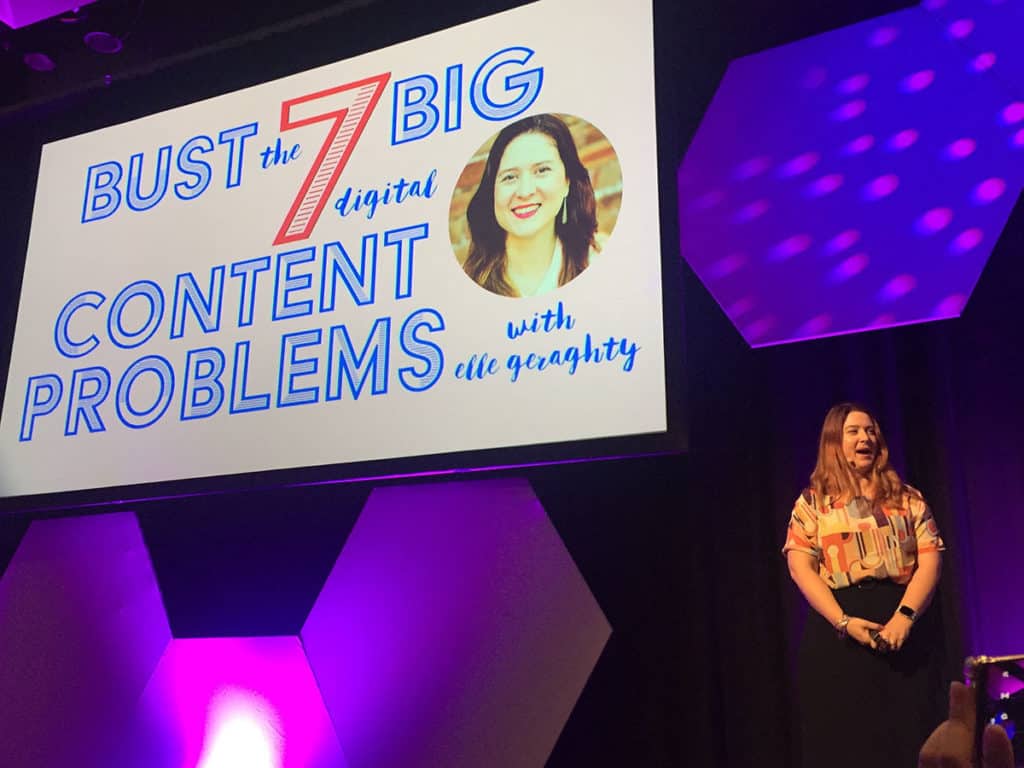
Short talks highlights
There were so many to choose from in the short talks list, it was always going to be difficult to catch everything I wanted. Thankfully there are transcripts and recordings available for all of this year’s presentations.
Here are some of the highlights:
Elle Geraghty
Bust the Seven BIG Digital Content Problems
So what are the seven big digital content problems? Elle gave us a solid understanding of content and the pitfalls to avoid in creating a good strategy. Also, some practical tips to get the best from what you have available. Elle is also well worth contacting if you need some content expertise.
Pilar Esteban
Relearning to Communicate
Pilar Esteban arrived in Sydney to work as an Experience Designer and didn’t speak English. This was his story of learning a new language and going from the talkative one in meetings to a focused listener, which is a lesson we could all take something from.
Tim Karioti
Laws to Norms – How Privacy Can Influence Design
Tim Karioti gave a superb talk on privacy and the importance of designing our privacy systems. We have to ensure the rights of individuals are properly protected, while the benefits of aggregating data are also realised. Tim emphasised how communicating which privacy policies are in place is so important in getting agreement. I feel privacy is going to become a very important issue for the design of technologies in the near future.
Zoe Green and Sam Frain
Respectful Curiosity: How and With Whom are You Building Inclusion?
Zoe and Sam gave us a great insight into their design work for disabled travellers using Sydney Trains. They also allowed the people who help them design and test solutions to speak directly to us. These folks made a great point about how we all make assumptions about people’s abilities that are often way off the mark. Zoe and Sam were very honest about their work and the mistakes they made. We should thank them for doing so. By being so transparent they have taught us a few things that may help us avoid the same mistakes.
David Di Sipio
How to Beat the Failure Cycle in Ten Minutes
David Di Sipio gave us one of the great frameworks to avoid procrastination. Key to his message is understanding the psychology behind why we struggle to do some tasks. He also outlined how to stay motivated and how to recognise the different stages we go through that prevent us from getting to our goals.
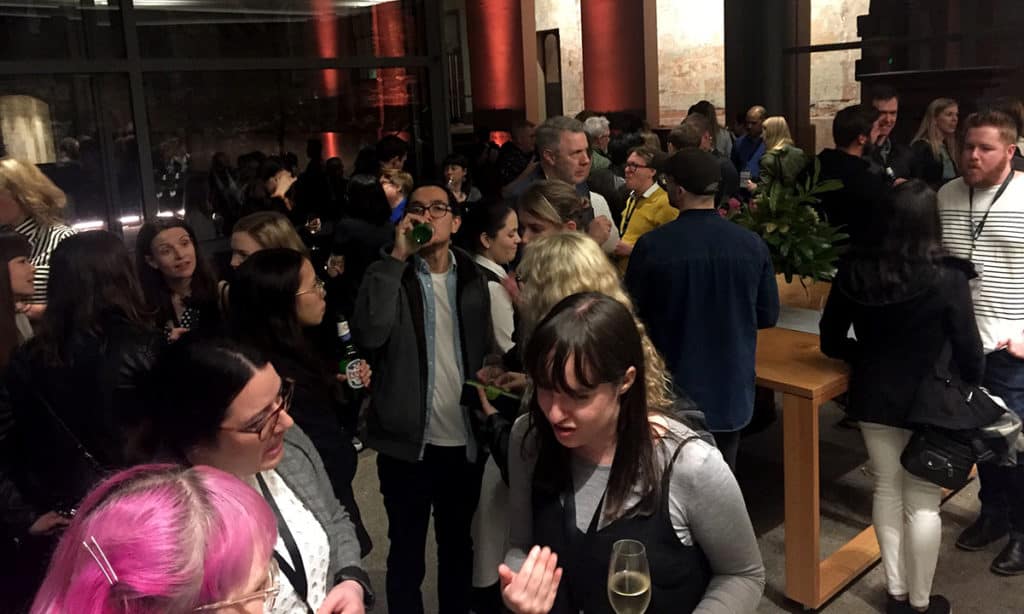
Wrapping up
The diversity of backgrounds in UX is always a pleasant surprise to me at these events. Each time I meet a group of UX folks, there is almost always someone with a new and unusual backstory about how they got into design. It’s also great to see more and more people attending UX events, who don’t work directly in the field. I met quite a few people who manage teams containing UX Designers and who are motivated to improve their own skills and understanding.
The Friday afterparty upstairs in the Hilton was the perfect way to wind down from the information overload. It was so nice to have a proper chat with some new friends.
Our opening speaker, Aral Balkan posted a short video conversation he had with Steve on Friday night. Aral asked if Steve thought his talk was too controversial and might affect sponsors… This was Steve’s response:
“So if people heard the message that you said, Aral, in your keynote and their response was ‘well I want nothing to do with that conference’, well in all honesty, fuck ‘em.”
– @docbaty
So if you are looking at the conference calendar for next year. Don’t go for the safe options. Get after those early bird tickets for Melbourne, and bring on UX Australia 2020!

